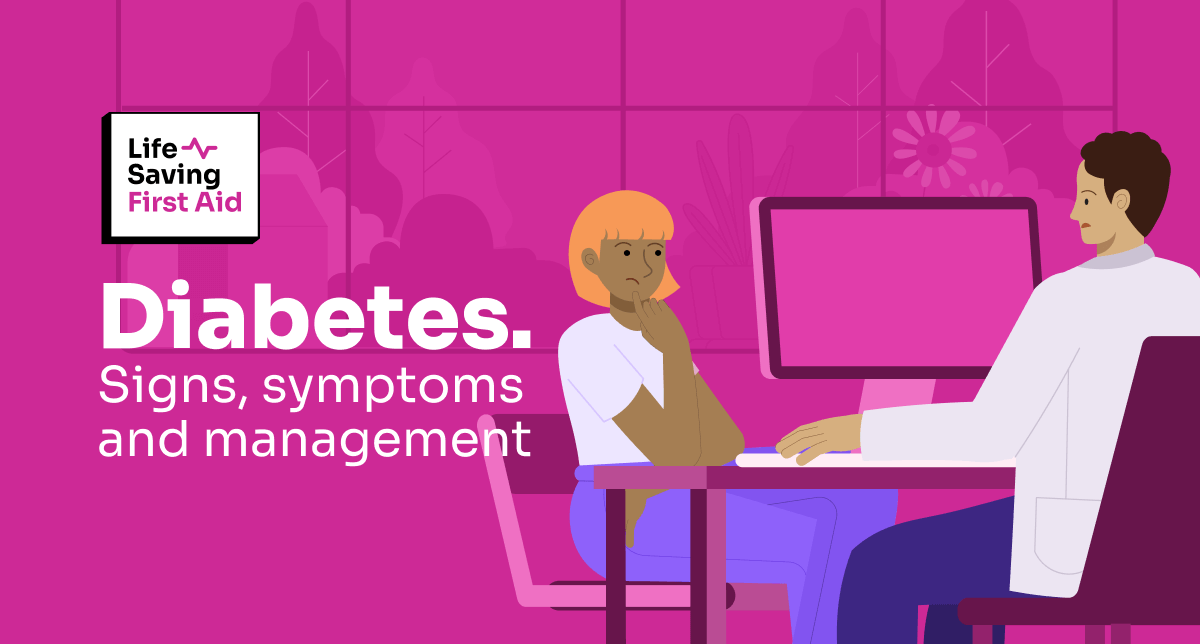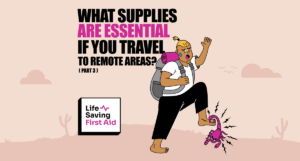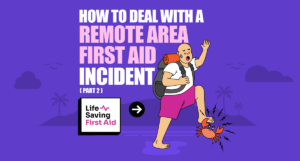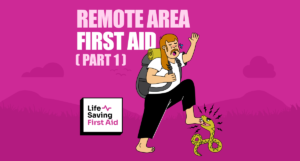Introduction
In this article we are going to look at Diabetes, what it is, how to recognise the signs and symptoms of Hypoglycaemic and hyperglycaemic conditions, and how to manage them and assist the casualty.
Here’s a few quick facts about diabetes.
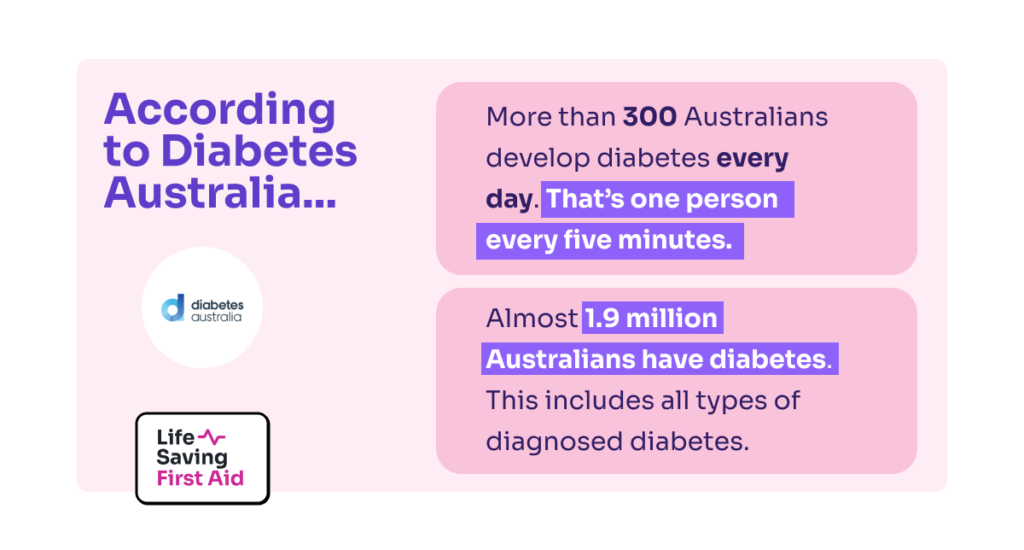
According to Diabetes Australia
- More than 300 Australians develop diabetes every day. That’s one person every five minutes
- Almost 1.9 million Australians have diabetes. This includes all types of diagnosed diabetes (almost 1.5 million known and registered) as well as silent, undiagnosed type 2 diabetes (up to 500,000 estimated)
- Almost 120,000 Australians have developed diabetes in the past year
- For every person diagnosed with diabetes, there is usually a family member or carer who also ‘lives with diabetes’ every day in a support role. This means that an estimated 2.4 million Australians are affected by diabetes every day
- The total annual cost impact of diabetes in Australia is estimated at $17.6 billion (inflation-adjusted)
In fact, diabetes is the fastest-growing chronic condition in Australia, increasing at a faster rate than other chronic diseases such as heart disease and cancer.
All types of diabetes are increasing in prevalence.
What is Diabetes?
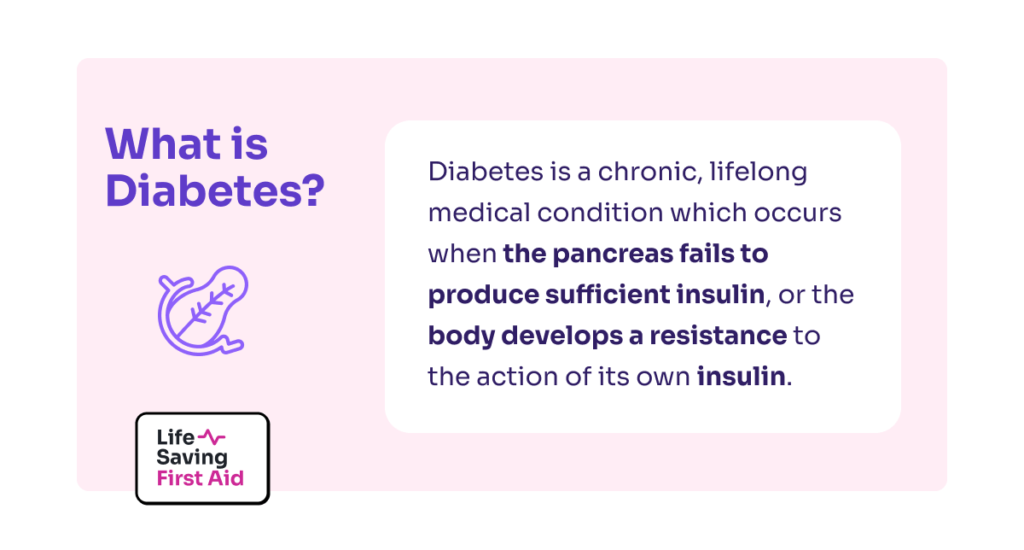
Diabetes is a chronic, lifelong medical condition which occurs when the pancreas fails to produce sufficient insulin, or the body develops a resistance to the action of its own insulin. Untreated, the absolute or relative lack of insulin will lead to a high blood glucose level.
When the body does not produce enough insulin or does not use insulin, glucose stays in your blood and does not reach the cells. This prevents the cells from functioning normally.
There are two main types of diabetes: Type 1 and Type 2.
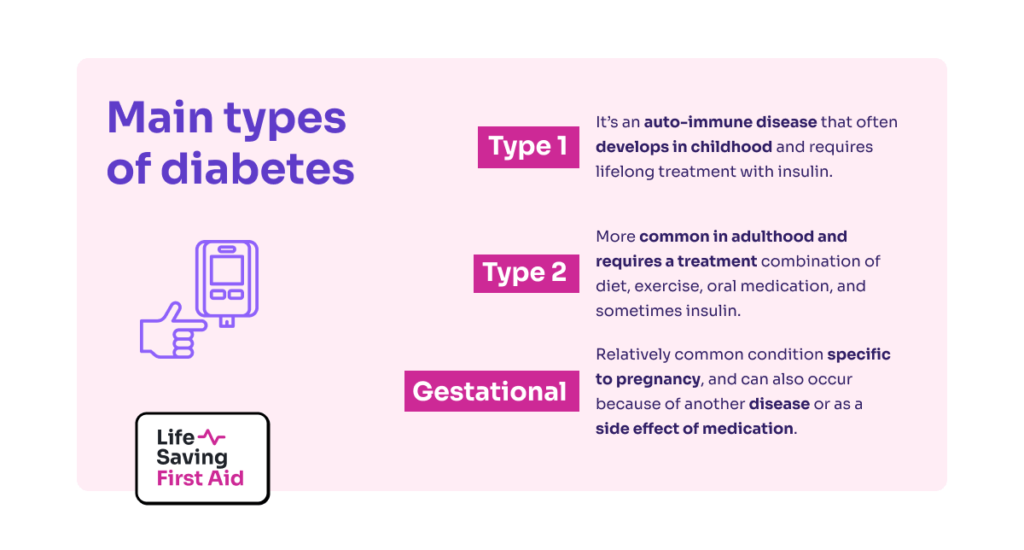
Type 1 Diabetes
Type 1 diabetes is an auto-immune disease that often develops in childhood and requires lifelong treatment with insulin.
Type 2 Diabetes
Type 2 diabetes is more commonly recognised in adulthood and requires a treatment combination of diet, exercise, oral medication, and sometimes insulin.
A third type of diabetes is Gestational Diabetes
Gestational diabetes is a relatively common condition specific to pregnancy.
Diabetes can also occur because of another disease or as a side effect of medication.
Blood Sugar levels

When blood glucose levels become too high or too low, people with diabetes may become unwell and need first aid or treatment at a medical facility.
The normal range of glucose concentration in the blood of a healthy person ranges from 4.0 – 7.8 mmol/L.
As a result, if someone has abnormal levels of blood sugar, they can either be HYPOglycaemic – LOW blood sugar, or HYPERglycaemic – High blood sugar.
You can use a blood glucose meter to determine a person’s blood glucose level. There are different types of blood glucose meters and for more info click here.
Hypoglycaemia
Hypoglycaemia – Hypo for short, can occur because of:
• Too much insulin or other blood glucose-lowering medication.
• Inadequate or delayed carbohydrate intake after their usual insulin or oral medication dose.
• Exercise without adequate carbohydrate intake.
• Possibly delayed for up to 12 hours or more after exercise.
• In the setting of other illnesses; or excessive alcohol intake.
If the person injects too much insulin, doesn’t eat, or undertakes exercise without replenishing sugar levels they can go into a Hypo.
Signs and Symptoms of Hypoglycaemia
Some or all of the following are signs and symptoms of a Hypo.
• Weakness, shaking
• Sweating
• Faintness, dizziness
• Teariness or crying
• Hunger
• Numbness around the lips and fingers
• Sweating,
• Pallor (pale skin), especially in young children
• A rapid pulse; and a headache.
• Mood or behavioural changes, with confusion, inability to concentrate, and slurred speech.
• Inability to follow instructions.
• Unresponsive; or seizure, can lead to coma and possibly be fatal
Hypo management
The recommended way to manage a person with Hypoglycaemia is:
• Stop any exercise, make them comfortable, reassure them, and follow the person’s diabetes management plan if they have one.
• If the casualty is fully conscious and able to swallow give them some sweets such as jellybeans or a sugary drink. This will raise their glucose level and you should see some positive results within a few minutes.
• Do not give them diet beverages or sugar-free sweets.
• If their condition improves give them a meal or something to eat and monitor their condition.
If the person does not improve with this treatment, is seizing or is unconscious, call for an ambulance. I
If they are unresponsive and not breathing normally, commence resuscitation.
For an unconscious breathing person, place them into the recovery position and ensure the airway is clear.
Monitor their condition until the ambulance arrives.
Hyperglycaemia
Hyperglycaemia, Hyper for short, or high blood sugar level can occur because of
• Inadequate levels of insulin
• Incorrect doses of diabetes oral medications, infections,
• Excess carbohydrate intake,
• Stressful situations.
Hyperglycaemia can develop over hours or days, and many people do not experience symptoms from hyperglycaemia until their blood glucose levels are extremely high.
Hyperglycaemia can also occur at the time of initial diagnosis of diabetes and may go unrecognised until the person is clearly unwell.
If untreated, the person gradually deteriorates and can go into a coma.
Signs and symptoms of Hyperglycaemia
These may include:
• Excessive thirst with frequent urination/
• Dry skin and mouth, with sunken eyes (signs of dehydration)
• Recent weight loss
• Rapid pulse
• Nausea, vomiting and abdominal pain
• Rapid breathing
• Fruity sweet smell of acetone on the breath (like paint thinner or nail polish remover)
• Confusion and a deteriorating level of consciousness
• or unresponsiveness
Hyper management
The recommended way to manage a person with Hyperglycaemia is:
Follow the person’s diabetes management plan. If the person does not have a management plan, call 000 as they should be assessed by a health care professional.
• For unresponsive casualties with abnormal breathing, proceed with resuscitation.
• For unconscious casualties who are breathing normally, lay them down on their side in the recovery position and check to see that the airway is clear of any obstruction.
• Call 000
Conclusion
If you are unsure if the person has a high or low blood glucose level, the safest option is to treat hypoglycaemia (low blood glucose level).
Giving the casualty sweets may lead to a marked improvement if their blood glucose level is low. Indicating low blood sugar.
No improvement after giving sweets would indicate high blood sugar levels, and, if that’s the case, the small amount of sugar given would have little effect on blood sugar levels.
Let’s recap the main points:
• Hypoglycaemia is LOW blood sugar caused by too much insulin
• Hyperglycaemia is HIGH blood sugar. Not enough insulin.
• For a Hypo if conscious and able to swallow give the casualty sweets or a sweet drink
• If this does not improve their condition or they go unconscious call 000 Place in recovery position or CPR as required
Remember, If in doubt about their condition, Hypo or Hyper, treat as Hypo
If you liked this article click here for more First Aid-related info
Well, that’s that. Until next time… Stay safe.
